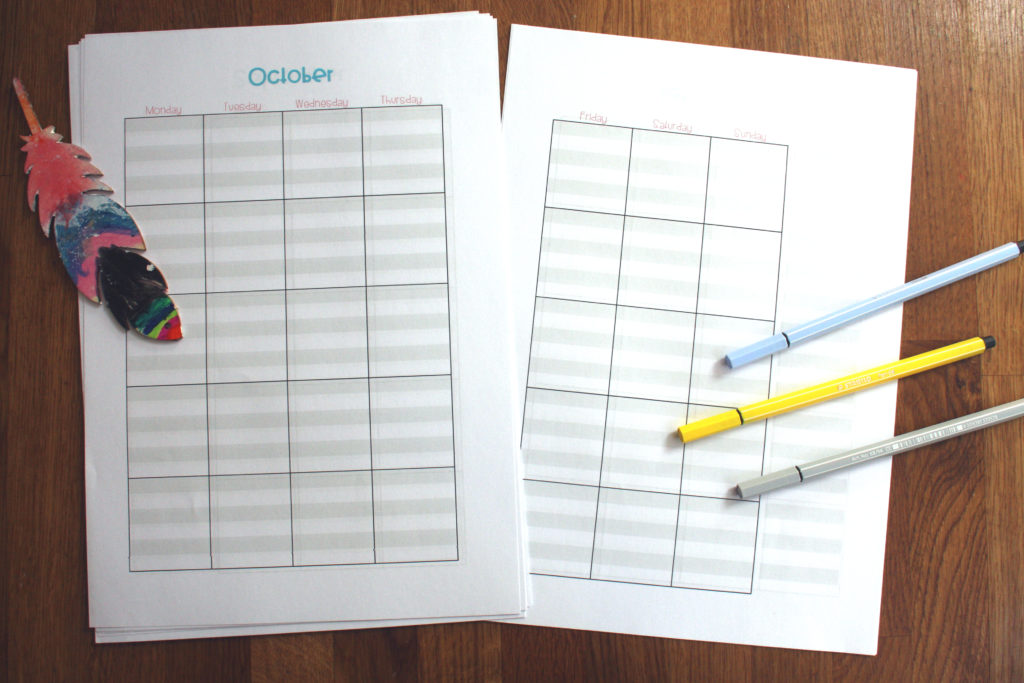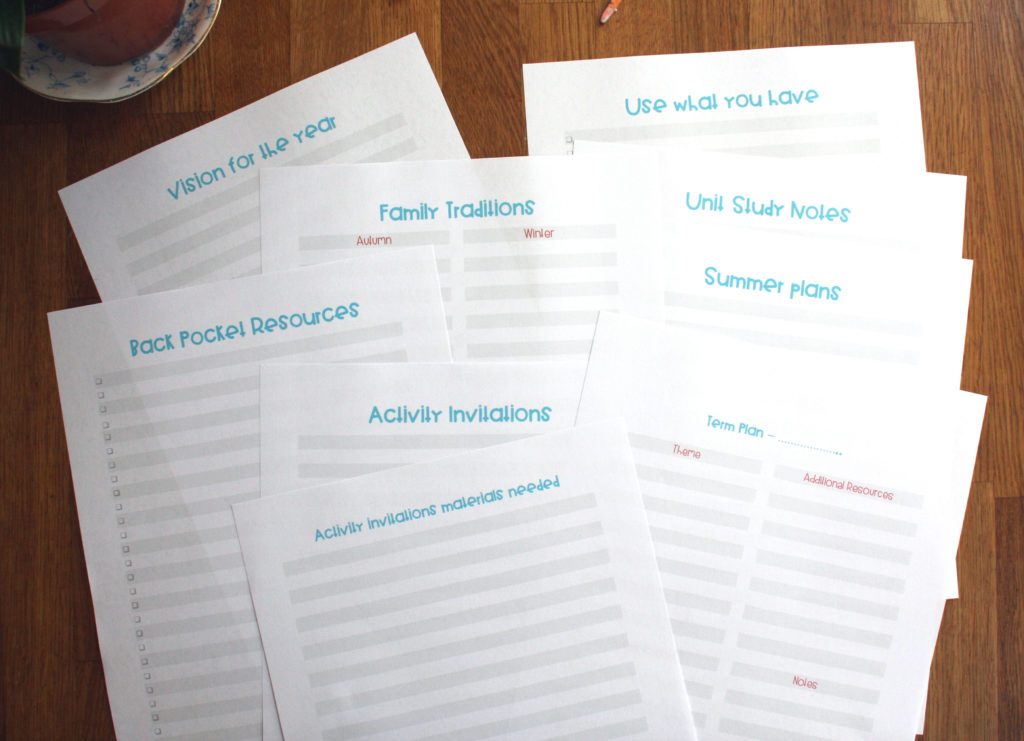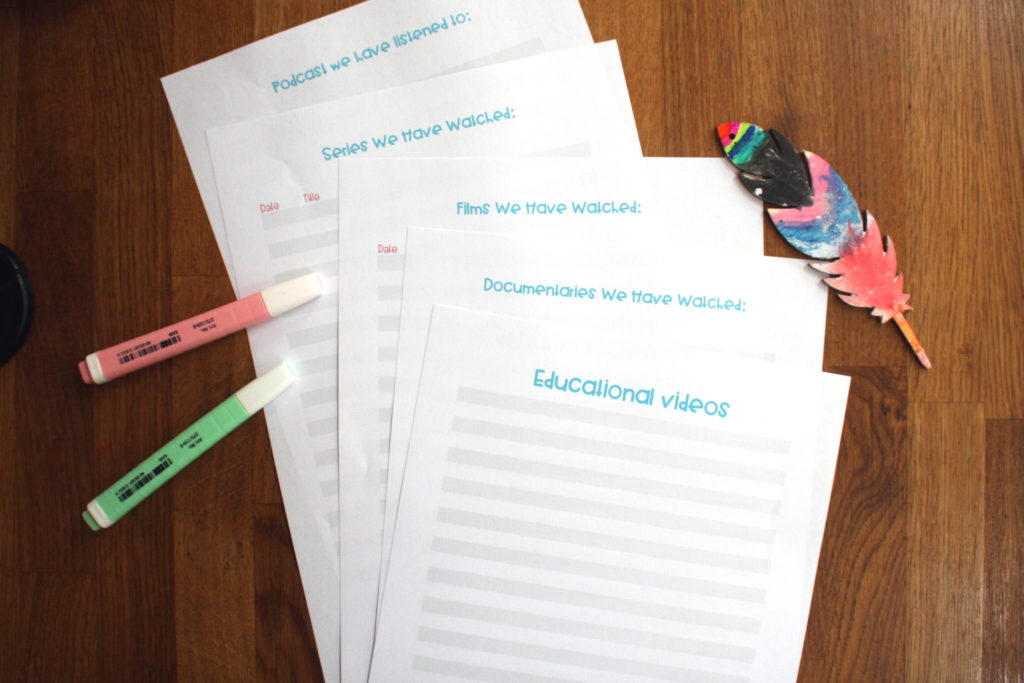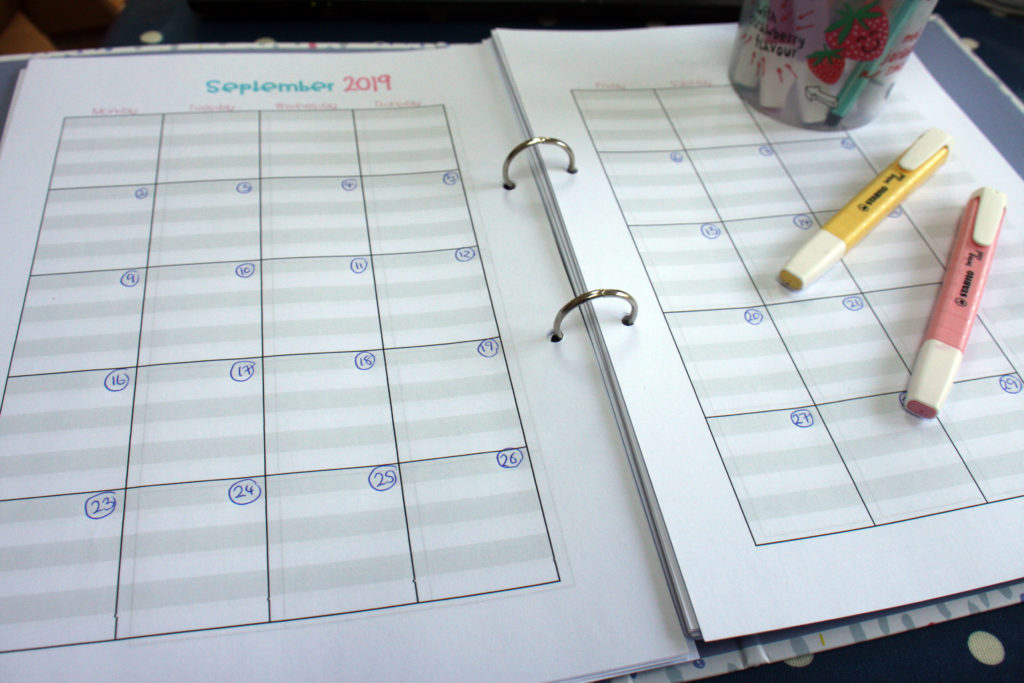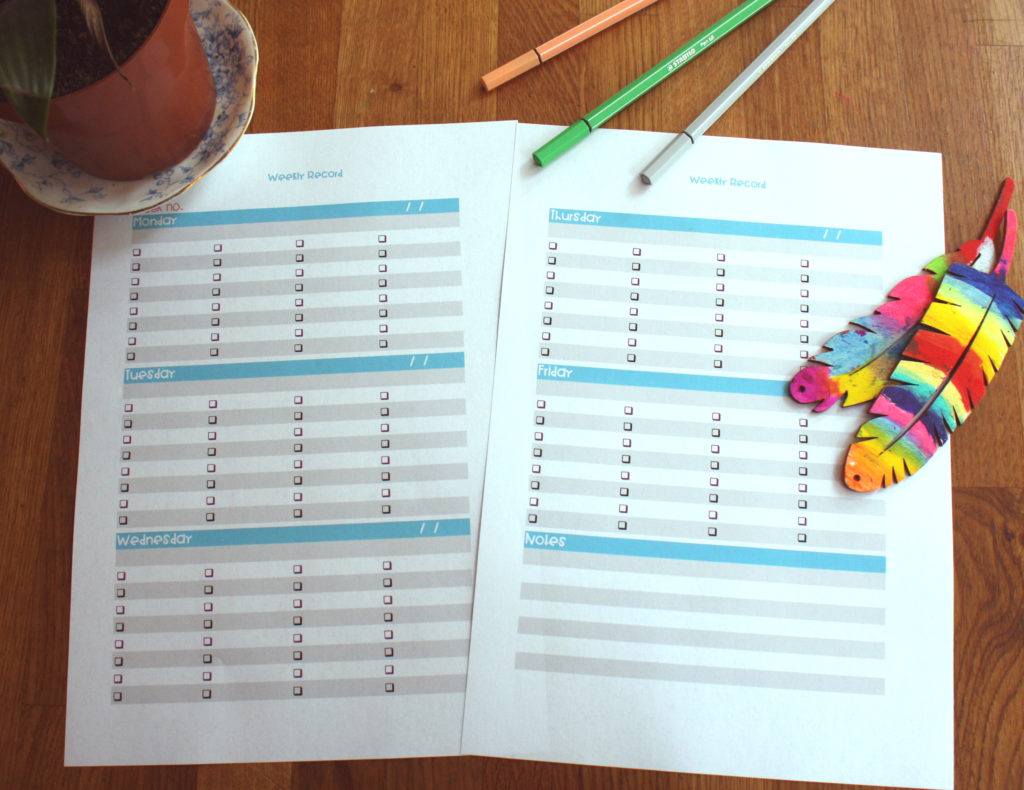Home Education Planners 101 Part 2: The Pro and Cons of a Printable Home Education Planner and Bullet Journal
This post may contain affiliate links. Please read my disclosure statement for more information.
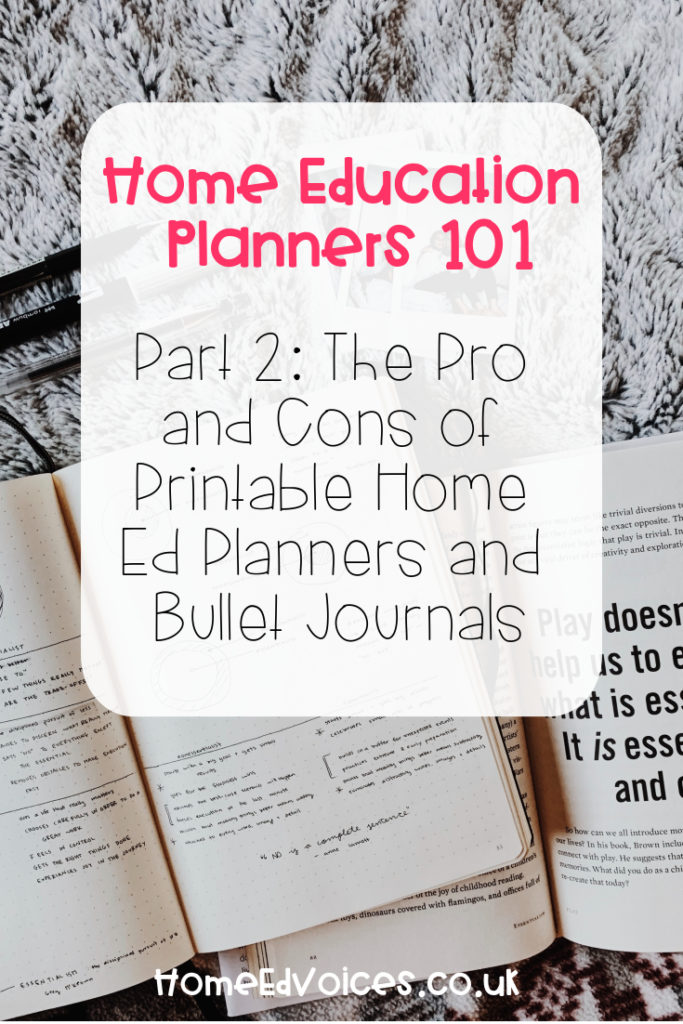
So you’ve read my reasons for keeping a home education planner, (ie part one of this series), but where do you start?
The two cheapest, and easiest ways of making a home ed planner that I have experimented with over the years, are by using a printable home education planner you can find online, or making a home ed bullet journal (aka bujo) out of a notebook.
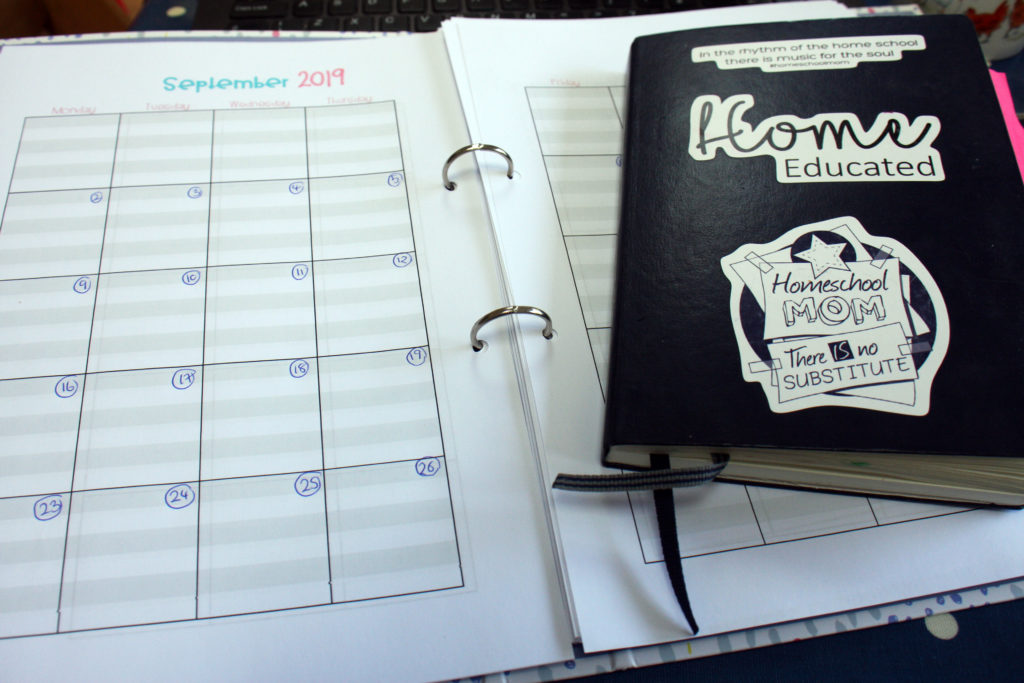
Both of these systems have their advantages and disadvantages, which are worth considering before you give one or both of them a go.
Printable Home Education Planner
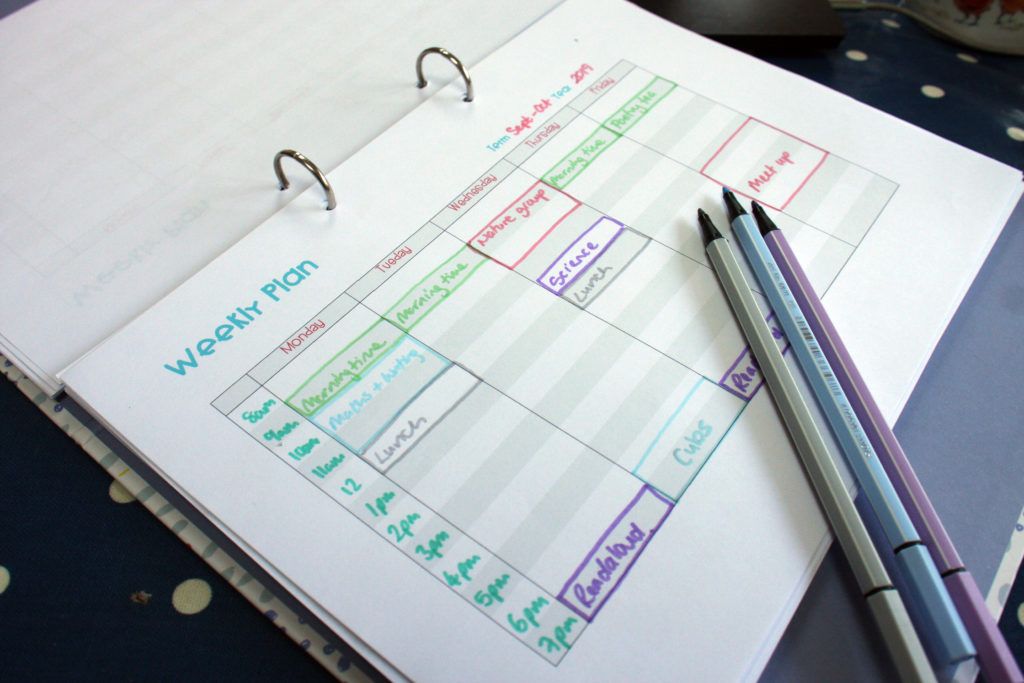
These are usually a collection of pages that can be printed out and stored in a binder to make your own printable home education planner. I have made one that I have been using for the last couple of years, which is now available on etsy.
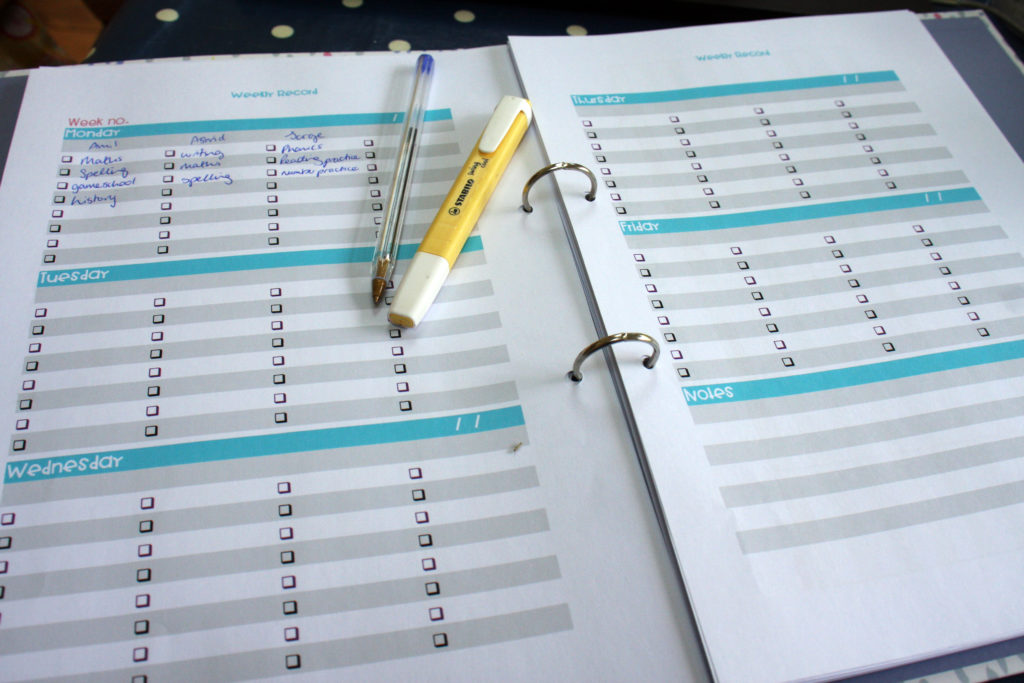
Pros of using a Printable Home Ed Planner
- You can work out what pages are useful to you and just print off those ones
- You can hole punch them and put them in a folder, which means you can change the order and add pages as necessary
- (or you can have them bound at a copy shop or stationers for a few pounds and have them as a booklet with a protective plastic cover but that means you can’t easily add more pages or move things around. But you are getting that printed planner feel at a lower cost.)
- If you make a mistake you can reprint the sheet and have another go
- if you want to change your plans later in the year you can add more suitable planning pages as you go along
- you can arrange things with tabs or dividers to create different sections
- can be supplemented with ordinary sheets of notepaper, other printouts or artwork you want to refer to or save
- works really well if you are planning to keep your planner at home most of the time
- You can pull out some sheets and use them with a clip board for that week then add them back into the main folder at the end of the week, rather than using them straight out of the folder. This can make various things, like checklists more convenient, and easier to use.
- A4 is really easy to write on and gives you plenty of room to get your ideas out.
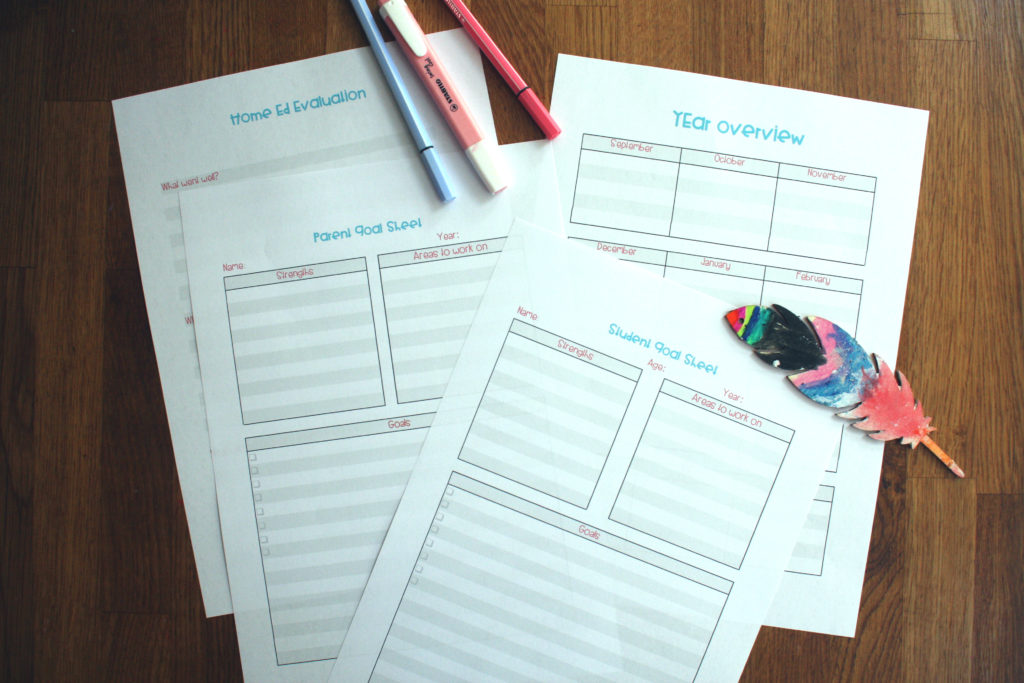
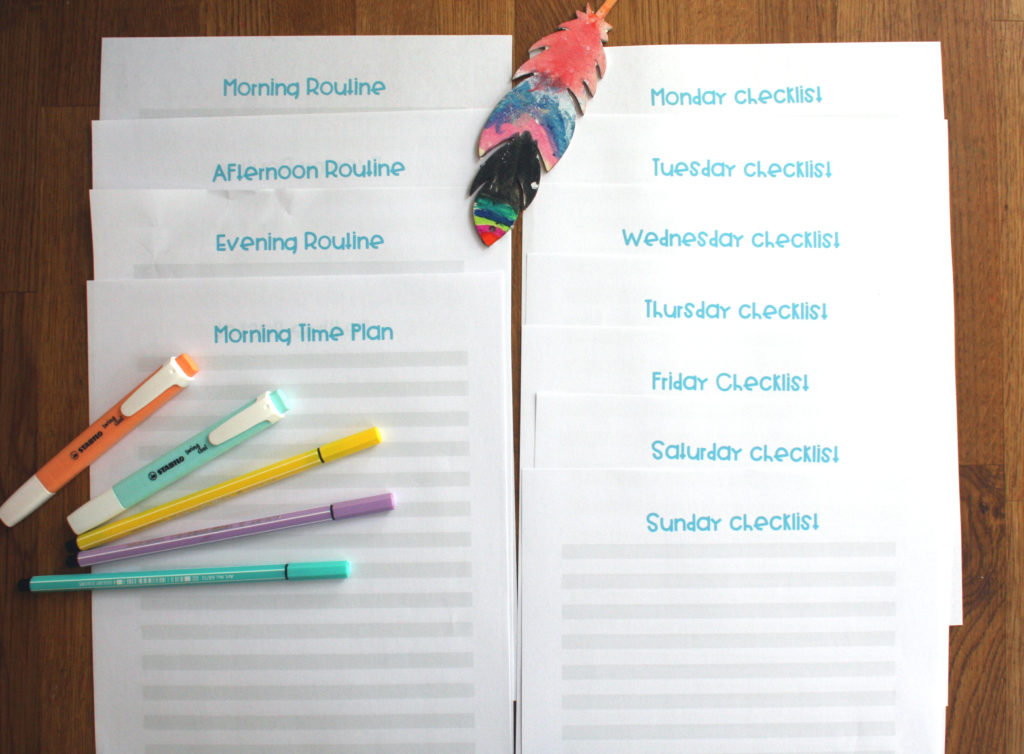
Cons of using a Printable Home Education Planner
- printing your own planner assumes you have a printer (which not everyone does.)
- on a related note, even home printing can be expensive unless you have a subscription, or a more expensive printer where you can pay for cheaper ink cartridges (instead of a cheap printer with expensive ink cartridges, which has historically been my experience)
- planner pages are usually designed to be a4 or US letter sized so your planner is a bit big to carry around
- in the same vein, folders are bulky
- generally hard to archive – you could decide to keep the useful pages in a lever arch folder, and keep a number of years worth that way if you want to, but again it’s bulky and it’s hard to actually peruse through a lever arch folder
Home Ed Bullet Journal
The bullet journal method was created by Ryder Carroll and is a way of organising and tracking information using just a notebook. You can watch a short video that explains the basics on bullet journalling here, and find a lot more information in the books The Bullet Journal Method by Ryder Carroll and/or How to Bullet Plan by Rachel Wilkerson Miller. (I have read both books and think they are both excellent.)
Basically Bullet Journalling uses numbered pages and an index in your notebook to help you find the things you have written in it. If you go on pinterest you will see very complicated and beautiful bullet journal layouts but at the start you really only need a notebook and a pen.
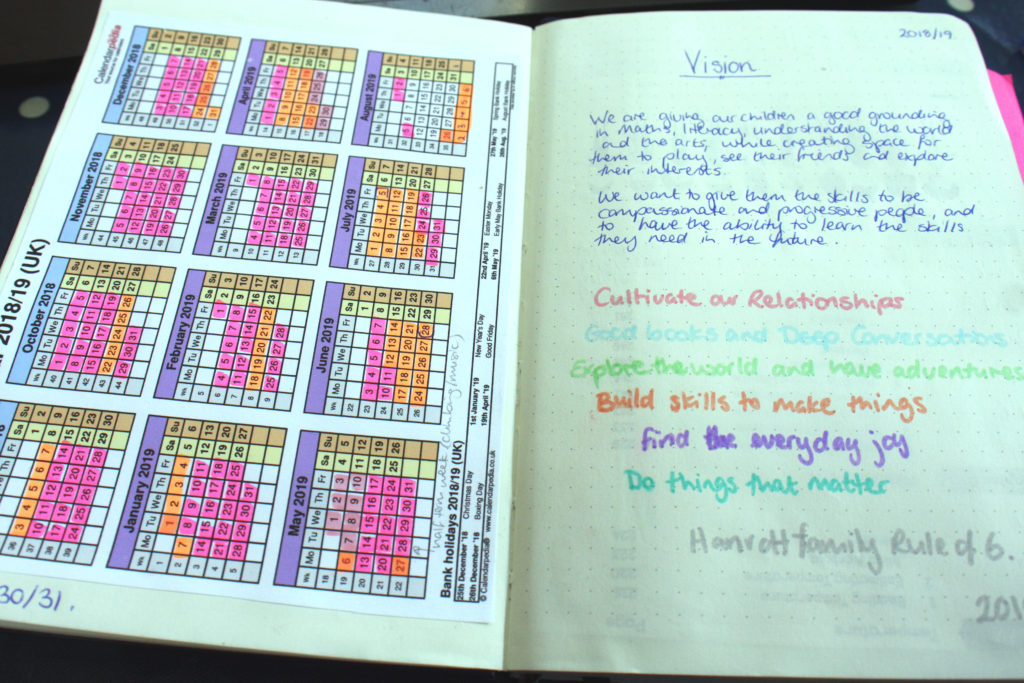
Pros of using a Home Ed Bullet Journal
- you can use what you already have assuming you have a notebook and a pen and you are willing to write the pages numbers into your book as you go along
- Leuchtturm make amazing notebooks with page numbers and the index built in and are becoming increasingly available (I buy mine from Rymans – I loved the dotted ones.)
- If you want to add printables you can print them half size and stick them into your notebook
- you can make the bullet journal be anything you want it to be. You add sections whenever you want, and try things out.
- You can add as many lists as you like just by turning to a new page and then adding that page’s number to your index
- If you use threading then you can keep adding to existing lists or pages and never worry about running out of room, even if you have used the pages directly after that page. (Threading means that if you fill the page, then you turn to the next blank page and carry on with your list/ideas. You link the pages together by writing the later page number next to the first page you were writing on, and that first page number to the page that you continued on from. That way you always know where to go forward or back to continue the thought. You can also use this for families of lists – for example I thread all my weekly meal plans together in my personal bullet journal so that I can go back and get inspired by past weeks as a put together the latest plan.)
- You can use a notebook that is easy to carry around if it suits you. (I use an A5 size.)
- Archiving is much more convenient – Your bullet journal becomes a mixture of ideas, things you have done, things you want to do, and when it is full, (assuming you keep the index up to date, or go back and fill it in at the end) you will have a book you have put on your shelf and refer back to as necessary.
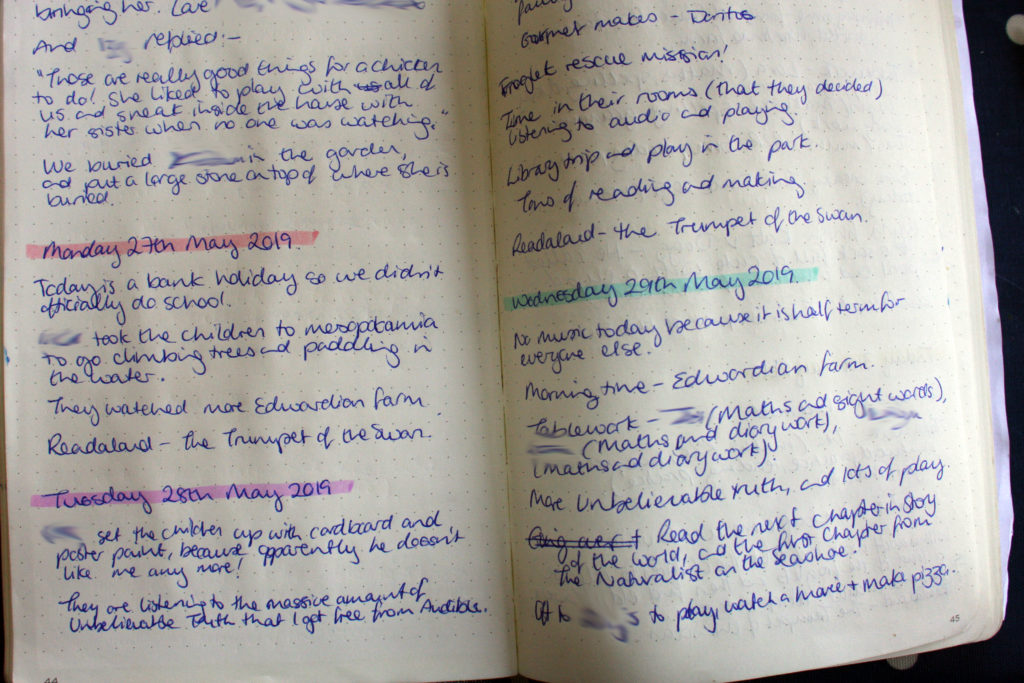
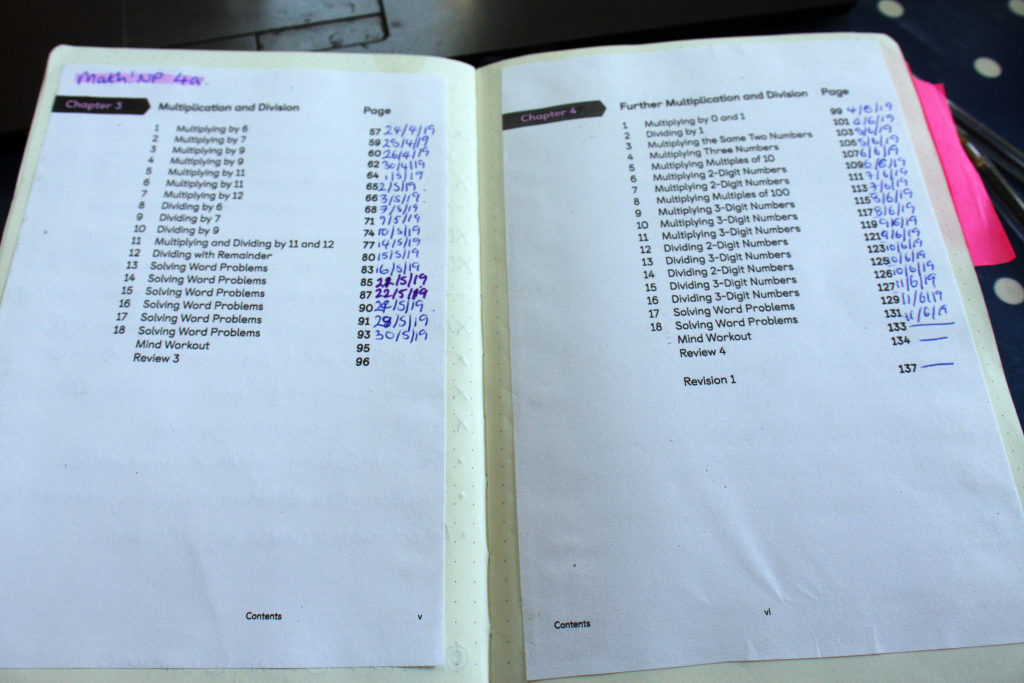
Cons of using a Home Ed Bullet Journal
- Leuchtturm notebooks are approximately £17 which is not in everyone’s budget
- If you use a notebook that doesn’t have page number in then you have to write them in by hand which can be annoying, especially if you do a lot of pages in one go and realise a couple have stuck together
- Bullet Journals can seem complicated when you first use them, and going online to find inspiration can be downright intimidating, (though looking for minimalist bullet journals is a bit calmer. That said I have been bullet journalling since 2015 and I have NEVER used a ruler in my bullet journal. Your bullet journal doesn’t need to be pinterest worthy to be useful, in fact I would suggest that most of the most beautiful and complicated layouts leave very little room in which to actually plan or record what you want to do/did and therefore, from a planning point of view are of very little use.)
- You might be keeping track of a number of things across the book, and need lots of bookmarks or clips to helps you access them easily
- Some people get really intimated by an empty notebook and perfectionism makes it hard for them to get past mistakes
- If you don’t have a printer then you might have to write out a lot of things you want to track by hand. This is a good aid for the memory but is time consuming
Conclusion
You have to decide what you want from a planner.
Do you want to plan things ahead of time and tick them off as you do them?
Do you want to plan from behind and write what you have done, as a record and memory aid? (Julia Bogart wrote a great post about just that here.)
Do you want to keep your notes and plans to refer to them in the future? Is archiving important to you? Or are you going to chuck out your planner pages once you have finished with the term/school year? Will you archive your pages digitally (using something like Evernote) and if you do, will you ever go back and look at them?
Do you need/want to be able to carry your planner around with you easily?
Of course these two systems can work well together and personally I use both for different thing. There are a number of pages that I use from the printable planner in my bullet journal, and it would be easy to adapt the lists that would work in a bullet journal on loose leaf paper in a printable planner.
It has taken me six years to work out a planner system that really works for me, from my summer plans all the way to archiving. My bullet journal isn’t perfect, and will be a work in progress but it has solved a ton of problems that were annoying me, and (like my personal bullet journal) will end up as a book on my shelf that I can refer to and which shows what we were doing, thinking about and caring about in this period of time. My printable planner hold specific things that are useful to my planning and at the end of the year I bind them, along with example of work for my personal records.
You need to experiment and work out what works best for you.
In part 3 go into my Home Ed printable planner in detail and show you how everything works, and in part 4 I’ll show you all the things I keep in my home education bullet journal.
If you’re interested in the printable home ed planner featured in this blog post you can find it for the introductory price of £8.40 on Etsy. It includes over 50 home ed planning pages, a perpetual calendar and link to a special email group so that you can get free future updates on this version of calendar. If you buy to calendar you can also make suggestions for new pages you’d like and I’ll periodically go through them and add new pages.
If you have any questions about the planner please comment below.
